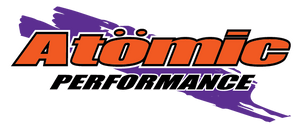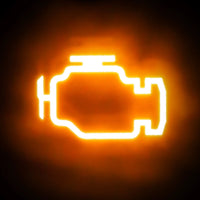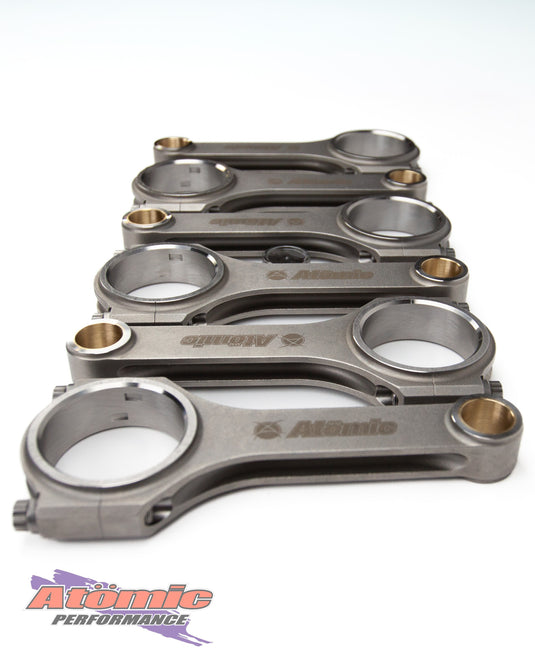
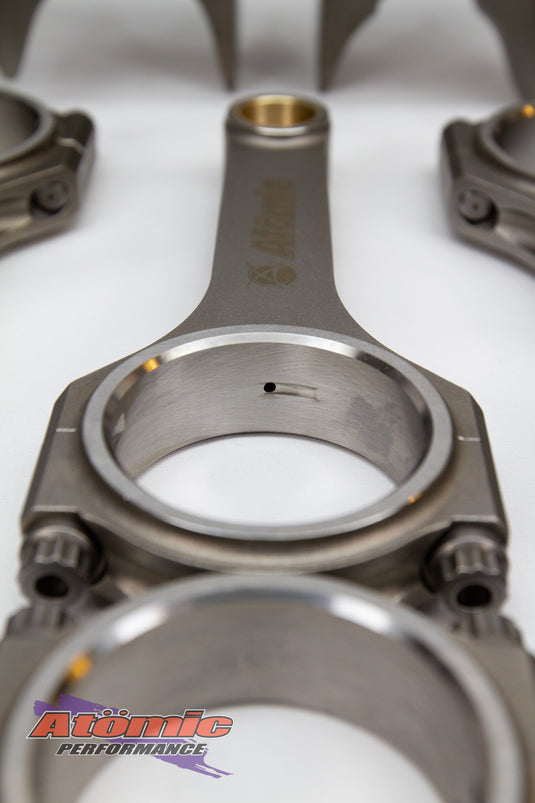
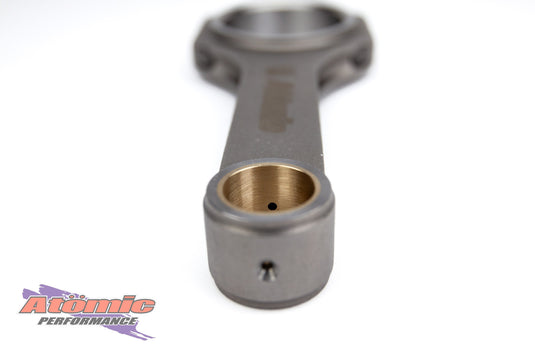
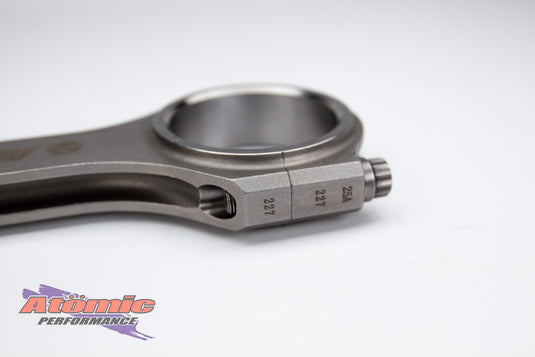
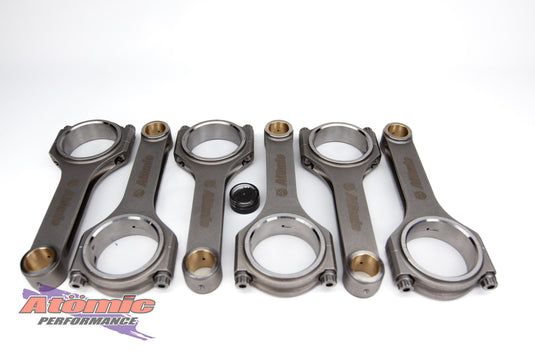
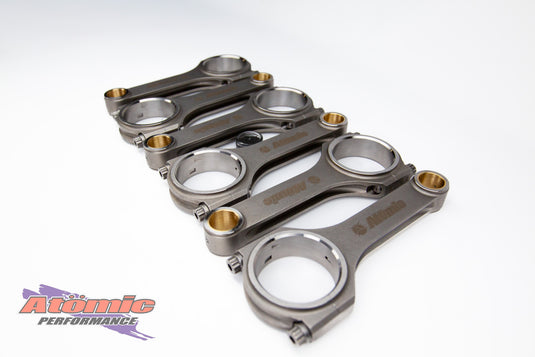
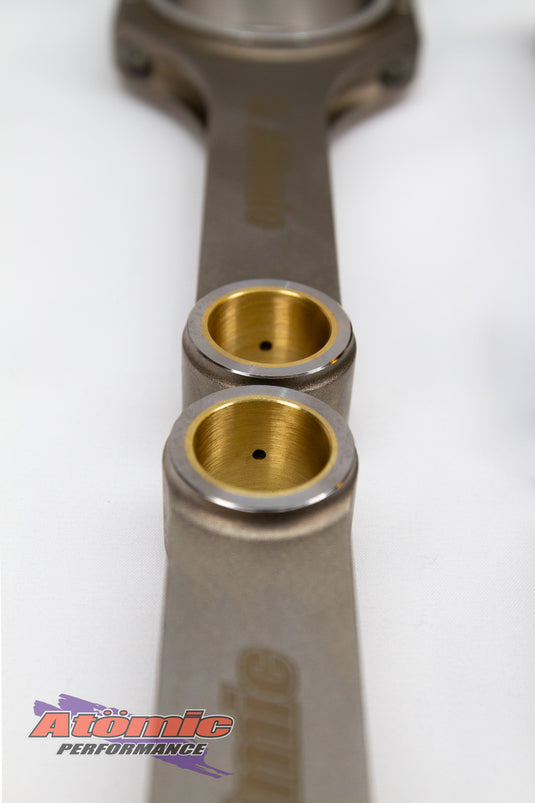
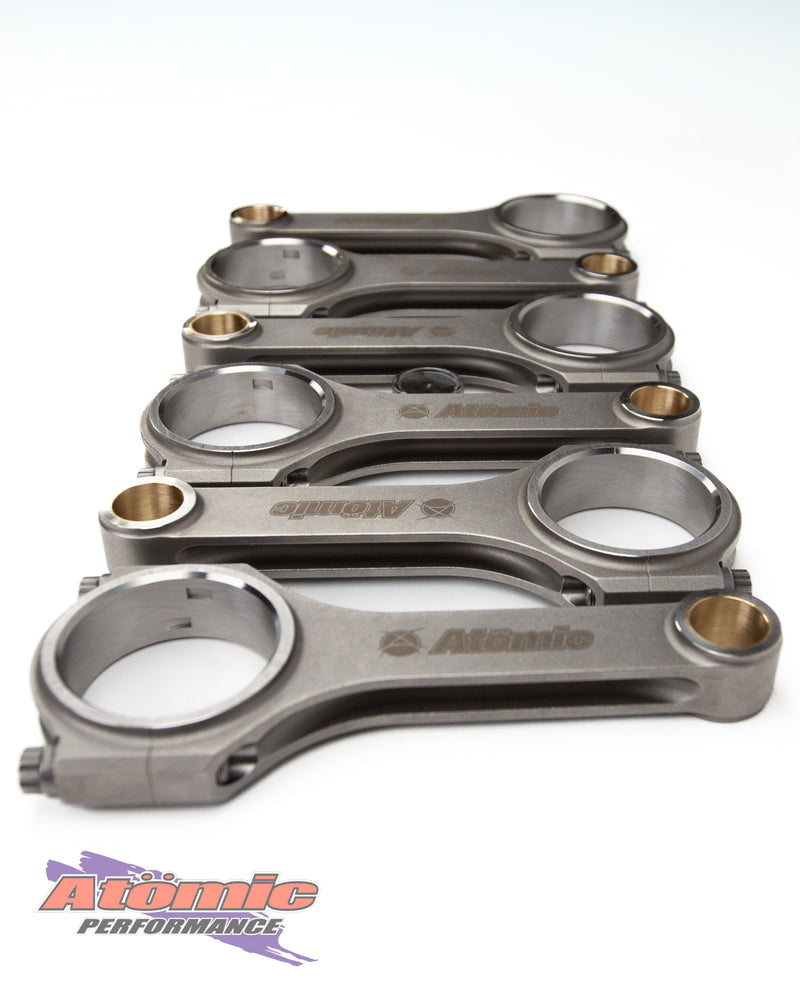
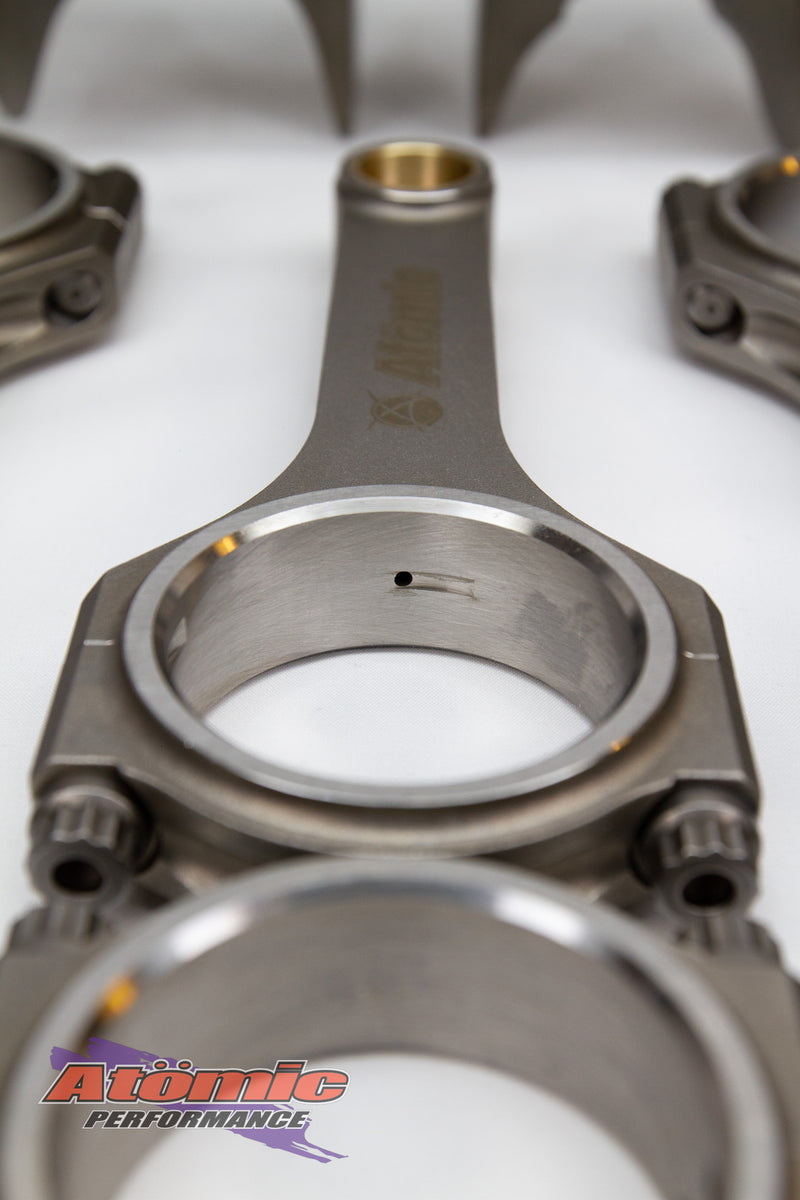
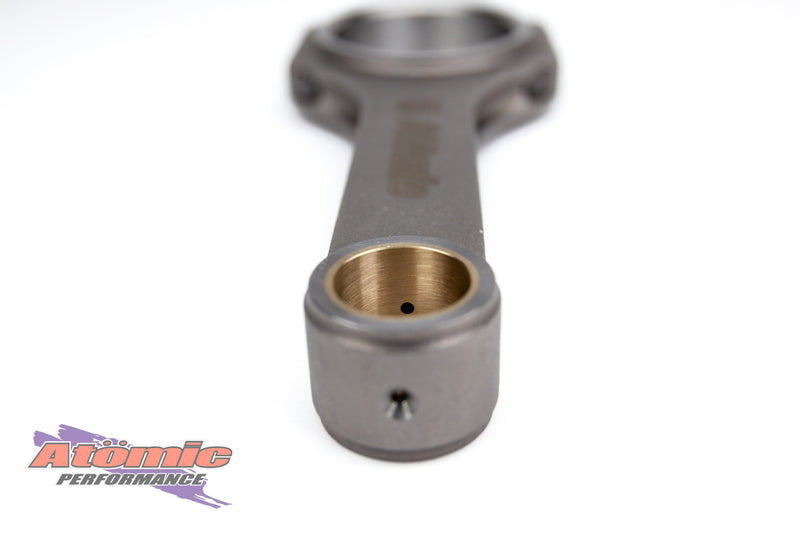
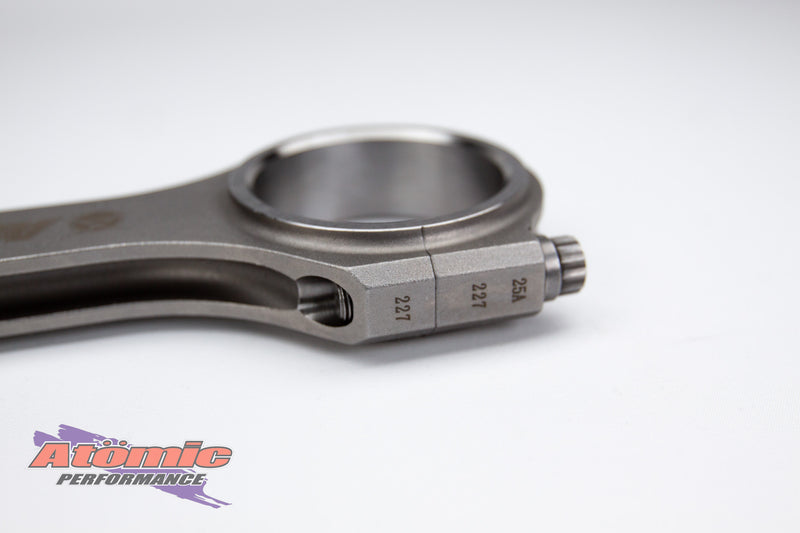
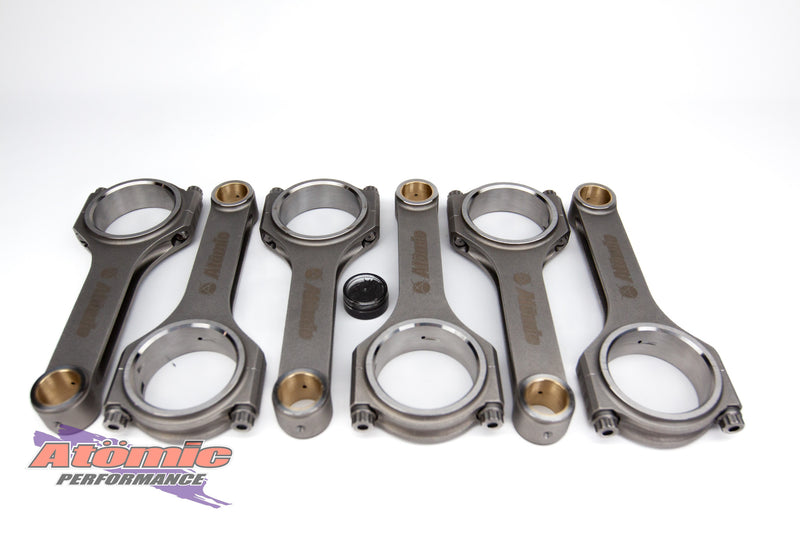
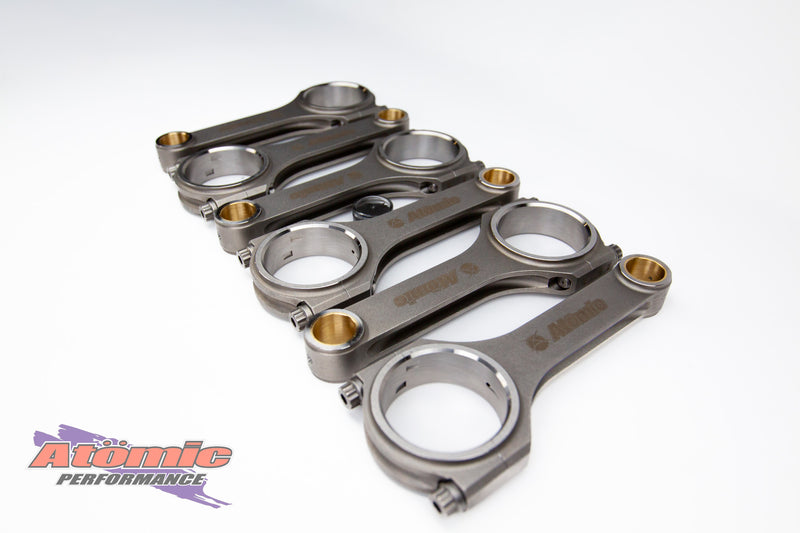
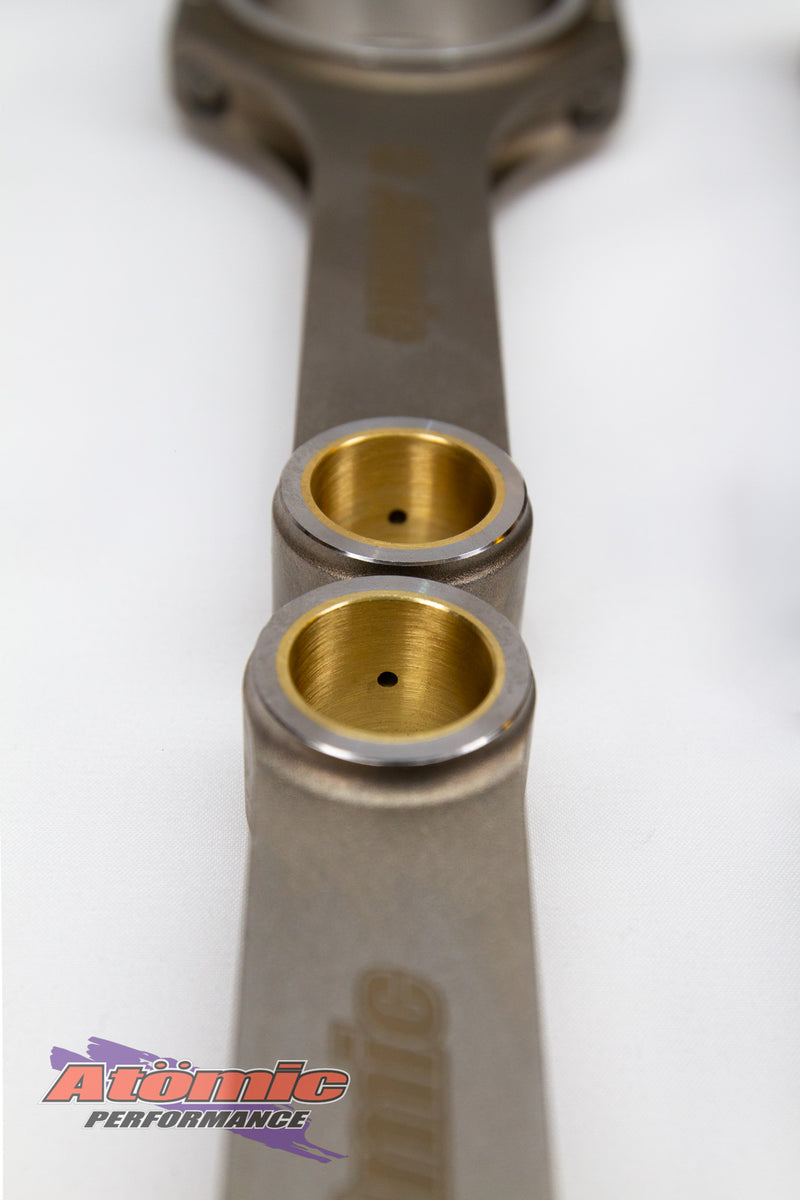
- Description
Atomic Billet Superleggera Conrods – Ford Barra & Intech | 1000+HP Rated | Weighing 722g | CA625 Bolts | Oil Fed Pin & Crown Cooling
Description:
The Atomic Billet Superleggera Conrods were developed from scratch with a clear goal: build the strongest, and most technically advanced conrod available for the inline 6 Ford Barra and Intech DOHC/SOHC engines — and make it affordable.
Weighing just 722g, Superleggeras are the lightweight option in the Atomic conrod lineup — ideal for naturally aspirated high-RPM applications, and turbocharged builds up to 1000hp. Made from aerospace-grade billet steel, they feature our signature H-beam design, CA625 bolts, pressure-fed gudgeon pin oiling, and piston crown cooling — all of which are typically found only in elite-level race engines.
Zero failures since launch in 2004. Just power, performance, and peace of mind.
✅ Key Features:
✅ Suits Ford Barra DOHC & Intech SOHC 4.0L 6-cylinder engines
✅ Rated to 1000+hp and 8500+ RPM
✅ Weighing in at just 722g per rod
✅ Aerospace-grade billet steel – strength without compromise
✅ H-beam design – higher stiffness-to-mass ratio than I-beam
✅ Includes pressure-fed oiling to the wrist pin
✅ Built-in piston crown cooling channels – unmatched detonation resistance
✅ CA625 conrod bolts – stronger and more RPM-resistant than ARP2000
✅ Designed, simulated, and stress-tested using FEA and CAD/CAM modelling
✅ Manufactured using precision CNC equipment and shot-peened for fatigue resistance
✅ Proven in street, drag, and endurance applications across Australia
🛠️ What Makes Superleggera Conrods Special?
✔️ Designed for high-RPM stability and reduced reciprocating mass
✔️ Pressure-oiled wrist pin bushings = longer pin & bush life
✔️ Piston crown cooling is a first in Barra conrod design
✔️ Never a single H-beam failure since release — and that’s over two decades
✔️ Perfect for high-performance NA engines and mid-power boosted setups
✔️ Balances elite performance with everyday reliability
🔍 Engineering Overview:
-
Big-end bore: 2.2394" finished
-
Small-end: .866" unfinished (engine builder to final size to suit pin tolerance)
-
Compatible with Cosworth, Mahle, JE, and other forged piston brands
-
Fully shot-peened and CNC-machined on precision equipment
-
FEA modelling confirms design strength well above peak load demands (8000g+)
📦 What’s Included:
-
Set of 6 Atomic Superleggera Billet Conrods
-
Pre-fitted with CA625 bolts
-
Supplied with torque specs and clearance guidelines
🏁 Atomic Conrod Innovation Timeline:
✅ First Hi-Kw H-beam conrod (2004)
✅ First 698kW-rated conrod (2008)
✅ First Barra conrods with piston crown cooling (2010)
✅ First with pressure-fed wrist pin oiling (2010)
✅ Never a recorded H-beam conrod failure. Ever.
Please note: Big end tunnels in #306200 and #306201 conrods are finished to 2.2394” (bottom size) and the small ends are left at .866” so final clearancing can be done by the engine builder to provide the correct clearance to suit the gudgeon pins. We do this as we have found some gudgeon pins come as a finished (Metric) size of 22.00mm (.8665”) (eg Cosworth, Mahle, etc) whereas other pins (predominately US made such as JE, etc) are finished to an Imperial measurement of .866”.
For Installation instructions click here
